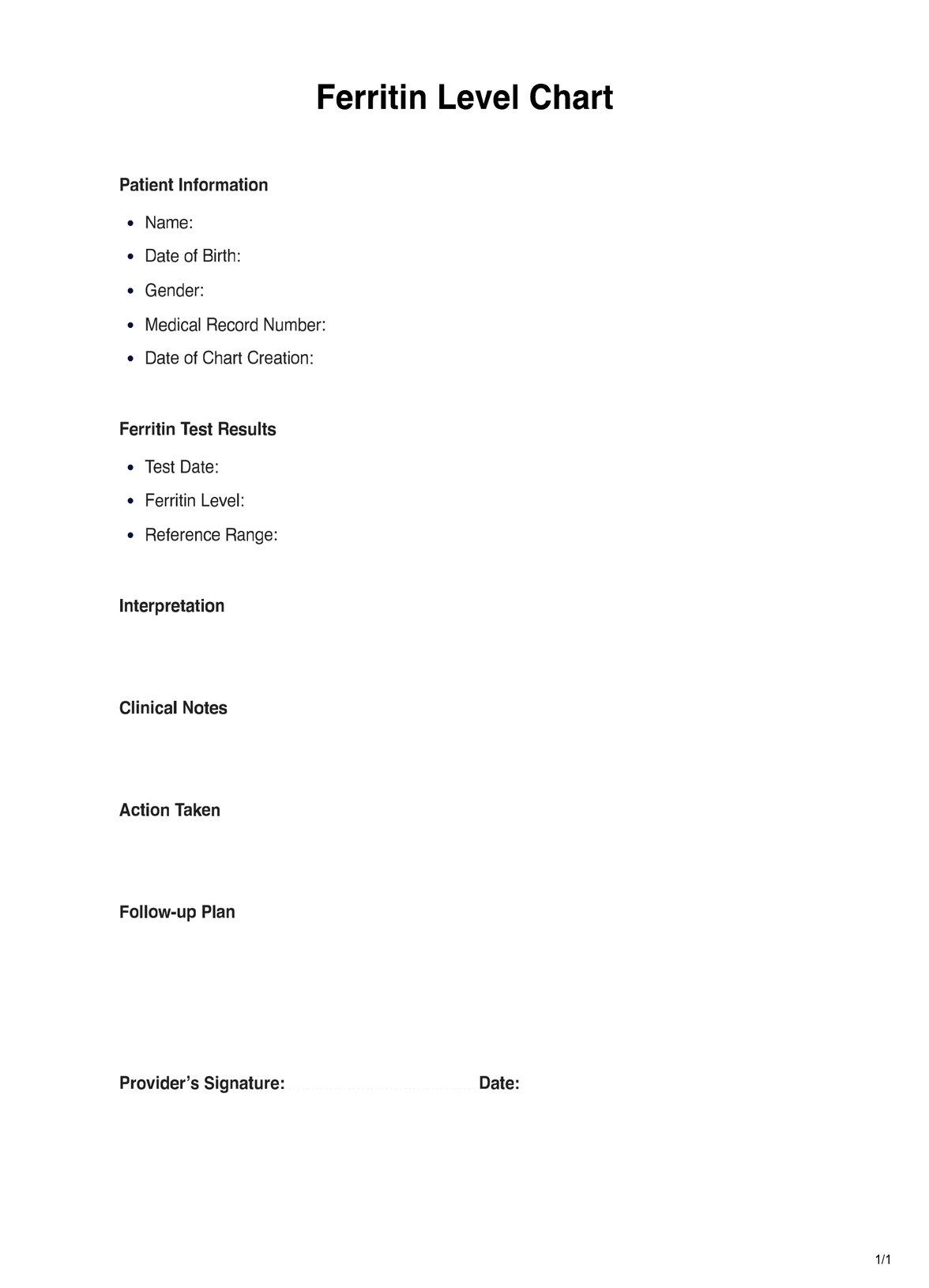Healthcare professionals, specifically doctors and nurses, are the ones who typically request a ferritin level chart for their patients. They use this chart to track changes in iron levels over time and make informed decisions about treatment options.

Ferritin Level
Monitor iron status effectively with our Ferritin Level Chart�??a valuable tool for healthcare professionals.
Ferritin Level Template
Commonly asked questions
Normal ferritin levels vary depending on age, sex, and other factors. Generally, normal ferritin levels range from 12 to 300 nanograms per milliliter (ng/mL) for adults. However, it is essential to note that these ranges may differ slightly between different labs and different countries. It is best to consult with a healthcare professional for personalized interpretation of ferritin blood test results.
A ferritin blood test is a simple procedure that involves taking a small blood sample from the arm. The blood is then sent to a lab for analysis, and the results are usually available within a few days. The test measures the amount of ferritin in the bloodstream, which reflects the body's iron stores.
EHR and practice management software
Get started for free
*No credit card required
Free
$0/usd
Unlimited clients
Telehealth
1GB of storage
Client portal text
Automated billing and online payments











